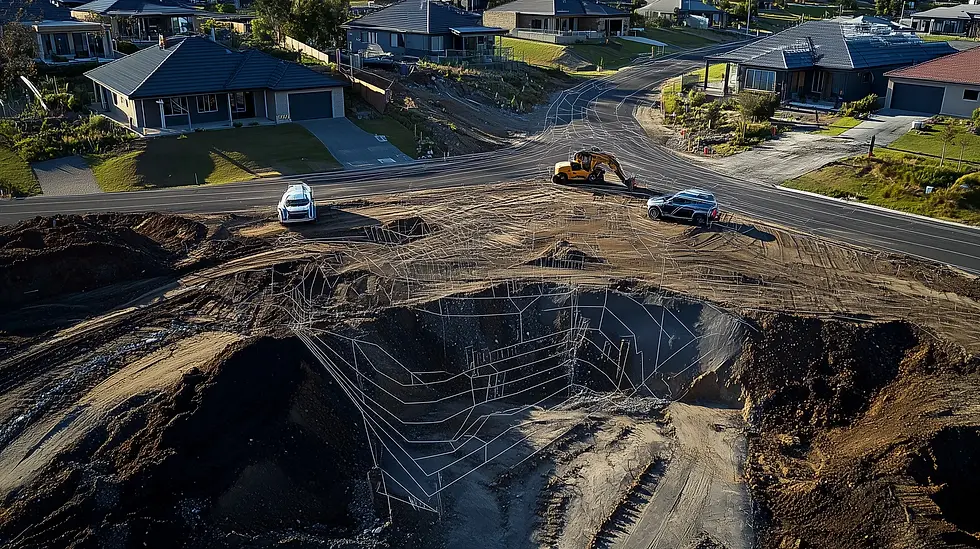InSAR Ground Motion Monitoring for NZ Infrastructure
- Avant

- Jun 12
- 3 min read
A satellite the size of a small car can spot the ground beneath it shift by less than the width of a fingernail.
Interferometric Synthetic Aperture Radar (InSAR) does this by comparing the phase of microwave echoes recorded on repeat satellite passes; any change in path length shows up as coloured fringes that can be converted into millimetres of motion.
Because radar works through cloud and in darkness, the technique delivers truly all-weather ground-deformation maps, turning the whole of Aotearoa into a passive sensor network for geotechnical, civil-engineering and environmental applications.

InSAR technology explained
What is Interferometric Synthetic Aperture?
A SAR instrument is an active sensor: it transmits a microwave pulse and times the echo’s return. By moving along its orbit and stitching thousands of echoes together, the satellite synthesises a very long antenna, achieving metre-class resolution from hundreds of kilometres away. Unlike optical sensors, microwaves are largely unaffected by cloud, rain, ash or darkness, giving year-round coverage.
Each image pixel stores two pieces of information:
Amplitude – how bright the target is at the chosen wavelength.
Phase – the position along the microwave’s cycle when the echo was received.
Phase is the secret sauce: if the satellite revisits the same spot from almost the same geometry, any change in the line-of-sight distance- even a few millimetres- will shift the phase.
From raw images to an interferogram
Processing starts by aligning (“co-registering”) two images to sub-pixel accuracy and subtracting their phases. The result is a wrapped interferogram, a psychedelic pattern where each colour cycle represents half the radar wavelength of motion. Unwrapping removes the 2π ambiguity, turning colour fringes into continuous centimetre maps.
Single interferograms are noisy. Atmospheric water vapour, orbital inexactness and changes in surface roughness all distort the signal. That is why modern InSAR chains analyse dozens to hundreds of scenes, extracting only the consistent phase shifts.

From SAR to land & surface displacement
Raw images pass through four main stages:
Precise orbit correction – GPS and star-tracker data refine satellite position to centimetres.
Co-registration & interferogram formation – images are aligned to sub-pixel accuracy; phase differences produce “wrapped” interferograms.
Noise reduction – multi-temporal filters isolate coherent pixels and suppress atmospheric artefacts
Time-series inversion – Persistent Scatterer (PS) and Small Baseline Subset (SBAS) algorithms convert stacks of interferograms into velocities and displacement histories
Advanced processors blend PS and SBAS approaches so that stable point targets (e.g., building corners) and distributed scatterers (e.g., bare soil) are both retained, delivering nation-wide deformation grids at 10–20 m spacing.
Application domains and typical examples of InSAR
Sector | Conventional Monitoring | InSAR Advantage |
Transport corridors (highways, rail, runways) | Total-station prisms every 500 m | 6-day updates over the full corridor; mm yr⁻¹ precision flags cut-slope or embankment creep |
Utilities & pipelines | Burst history & spot surveys | Detects sub-cm ground strain; improves pipe-failure risk models and renewal planning |
Hydro & tailings dams | Extensometers, levelling | Wall-to-wall coverage identifies uneven settlement or uplift at early stage |
Coastal land-level change | Tide gauges, GNSS | Separates tectonic/subsidence signals from eustatic sea-level, informing adaptation design |
Ground-water & subsidence basins | Borehole levelling | Maps clay-aquifer compaction; supports sustainable abstraction limits |

Implementation roadmap for smart In-SAR Project Plannnig and Deployment
Baseline screening – Compile a multi-year Sentinel-1 deformation map to locate “hot spots” along transport and utility networks.
Priority monitoring zones – Set up rolling updates over critical slopes, embankments, or coastal zones; integrate alerts into GIS or asset-management systems.
Sensor fusion – Co-locate low-cost GNSS, tiltmeter or fibre-optic DAS sensors on the highest-risk assets to capture sub-daily dynamics.
Digital-twin integration – Publish deformation layers through BIM or SCADA dashboards, closing the loop between remote sensing and maintenance scheduling
Swapping conventional ground instruments with country-wide, millimetre-precision deformation grids via InSAR, infrastructure owners can move from reactive inspections to predictive maintenance. This is great for reducing risk from earthquakes, landslides, subsidence and climate-driven sea-level rise while optimising capital spend.




Comments